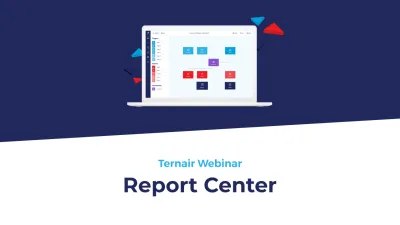Customer loyalty is one of the most important tools within marketing for a company. Retaining existing customers is often more (cost) effective than attracting new ones. Loyalty campaigns are a powerful tool to strengthen relationships with customers, reward them for their loyalty, and thus increase customer retention. In this blog, we will discuss what a loyalty campaign is, why they are important, how to create a successful campaign, and provide tips for deploying a loyalty campaign using Ternair.
What is a Loyalty Campaign?
A loyalty campaign is a marketing strategy designed to engage and reward customers for their repeat purchases and engagement with a brand. The goal of these campaigns is to increase customer loyalty, which can lead to higher customer retention, increased sales, and stronger brand loyalty. Loyalty campaigns can take different forms, such as savings programs's, exclusive offers, personalized discounts, or special events for loyal customers.
"Loyal customers spend on average 67% more than new customers."
Why are Loyalty campaigns important?
Win back campaigns are crucial for several reasons:
Loyalty campaigns are crucial for businesses for several reasons:
Customer retention:Retaining existing customers is often more cost-effective than acquiring new customers. Loyalty campaigns help keep customers happy and motivate them to make repeat purchases.
Increased customer value: Loyal customers tend to spend more than new customers. By rewarding them and providing a positive customer experience, you will increase Customer Lifetime Value (CLV).
Brand Ambassadors: Satisfied customers are more likely to share their positive experiences with friends and family, which can lead to new customers without additional marketing costs.
Insights and data: Loyalty programs's provide valuable data on customer behavior, preferences and purchasing patterns. These insights can be used to further personalize and improve the customer experience
Competitive advantage: In a competitive market, loyalty campaigns can help keep customers loyal to the brand and keep them away from competitors.
"75% of loyal customers recommend brands to friends and family, which can help attract new customers without additional customer acquisition costs."
How to Set Up a Loyalty Campaign:
Setting up a loyalty campaign involves a number of steps:
Determine Your Goals:The first step is to determine the goals of your loyalty campaign. Do you want to increase customer retention, increase average spend per customer, or collect customer data?
Customer Segmentation:Segment your customers based on their behavior, preferences, and purchase history. This helps you understand who your loyal customers are, what motivates them, and what matches their needs and expectations.
Choose the right reward system: There are different types of reward systems, such as points programs's, cashback, and exclusive discounts. Choose a system that fits your brand and is attractive to your customers.
Technology and tools: Use appropriate technologies and tools to support your loyalty campaign. These can range from dedicated loyalty software to integrations with your existing CRM and marketing automation platforms.
Communicate effectively: Use different channels to promote your loyalty program, such as email, social media and your website. Make sure customers are aware of the benefits and how to participate.
Measure and optimize: Monitor the performance of your loyalty campaign by tracking relevant KPI's, such as participation rate, customer retention and average order value. Use this data to continuously optimize your strategy.





